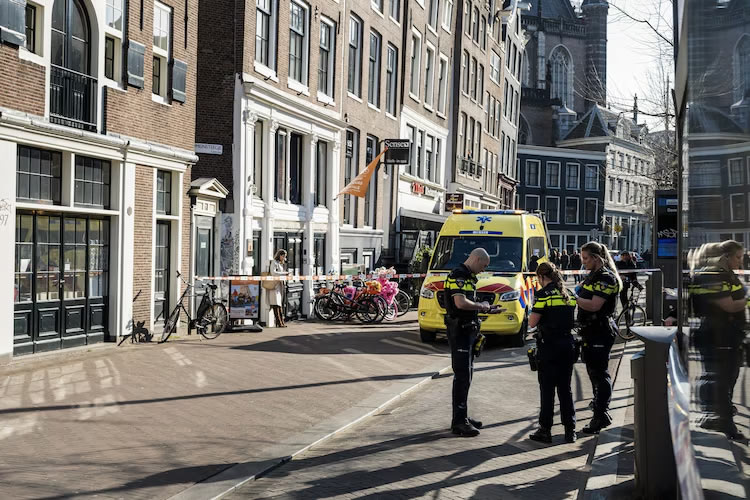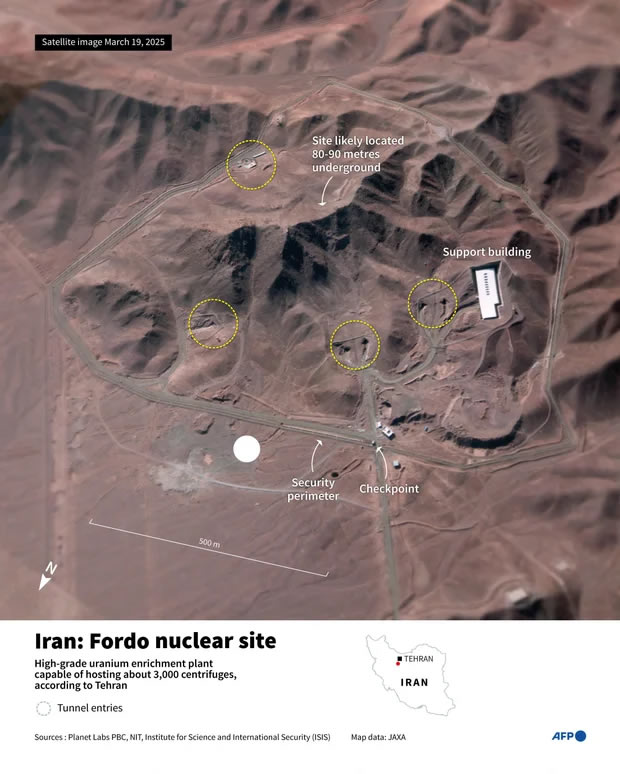The Supreme Court suggested that overturning Roe v. Wade would make things simpler. The story is different in every state, but one thing is the same: The end of Roe has not been simple.
When the Supreme Court overturned the landmark ruling Roe v. Wade last June, Justice Samuel Alito wrote for the majority that Roe had “sparked a national controversy that has embittered our political culture for a half-century.”
“Far from bringing about a national settlement of the abortion issue, Roe and Casey have enflamed debate and deepened division,” he continued, referencing a later decision affirming the landmark case, Planned Parenthood v. Casey.
Overturning the cases, he seemed to suggest, would begin to bring an end to that disorder, returning the issue to the people, to their elected representatives and to the democratic process – perhaps even bringing an end to the polarization that he insinuated Roe had facilitated.
But one year after the high court gutted that landmark decision, the issue remains roiled by controversy and confusion – and the intervening year marked by “chaos” rather than calm.
“In a word, it has been chaos,” Grace Howard, an associate professor of Justice Studies at San Jose State University, says. “A year later, for many people, it is not at all clear whether abortion is legal where they live. … Where we’re at now is completely chaotic. It’s not sustainable.”
The Supreme Court justices who voted to overturn Roe v. Wade suggested that doing so would make things simpler. But a year after Dobbs – the decision that dealt Roe its final blow on June 24, 2022 – the high court can’t outrun abortion. And the country can’t seem to shake the shrapnel in the decision’s aftermath.
Across the nation, abortion restrictions have wreaked havoc on health care systems, as providers have grappled with new and rapidly changing rules, while disturbing personal stories have rocked the cultural consciousness. Meanwhile, the decision sparked protests, some of which turned violent, with threats and at least one plot to kill a justice.
At the national level, abortion scrambled the midterm elections, bucking the typical political wisdom that promised the GOP a slew of wins with a Democrat in the White House – one with a paltry approval rating at that.
Long the white whale of conservative activism, Roe was fatally undercut in a country that, according to virtually every poll administered, wanted its constitutional protections to stay, as the justices held that “the authority to regulate abortion is returned to the people and their elected representatives.”
“There will be different answers in Mississippi and New York, different answers in Alabama than California,” Justice Brett Kavanaugh said during oral arguments over the Dobbs case. “Because they’re two different interests at stake and the people in those states might value those interests somewhat differently.”
Like Alito in the majority decision, Kavanaugh appeared to see a simpler picture in a post-Roe America, as states could make their position known and leave others to do the same, while intervention at the national level would be largely kept at bay.
Yet a year later, the public is more polarized on abortion than ever before, according to a recent Gallup poll that found that the majority of Americans still believe overturning Roe was a “bad thing” as Republicans and Democrats have retreated deeper into their respective positions.
“The Dobbs decision crystalized American public opinion on an issue that is actually quite gray for most people,” Mallory Newall, vice president of public polling at Ipsos, said in a statement. “However, when faced with the prospect of near or outright bans, we’ve seen the American public overwhelmingly in opposition, even as their fundamentally nuanced views on abortion remain mostly unchanged.”
The story is different in every state in the aftermath of the Dobbs decision. But even in states where abortion had already been heavily restricted or where the ideological makeup of the state legislatures suggested an eagerness to do away with abortion, the end of Roe has not been simple.
In deep-red Wyoming, abortion remains legal, for the time being, due to a legal holdup over an amendment to the state Constitution that grants residents the right to make their own healthcare decisions. In Texas, where abortion was heavily restricted even before Roe was overturned, a group of women sued the state, arguing that the bans have put their health at risk. And across a handful of states with GOP-controlled legislatures, lawmakers are taking more measured approaches to abortion restrictions – even when given the chance to go farther.
At the same time, abortion restrictions, which are sometimes overlapping, have complicated emergency care. According to a Kaiser Family Foundation poll, 68% of OBGYNs say overturning Roe has worsened their ability to manage pregnancy-related emergencies.
In Oklahoma, new research found that hospitals in the state “provided opaque, contradictory, and incorrect information about when an abortion is available,” even with exceptions to bans in the case of medical emergencies.
“It is a kind of surreal situation for many clinicians because for 50 years the right to, under certain circumstances, terminate an early pregnancy has always been a woman’s right,” Dr. Michele Heisler, an author of the study and the medical director at Physicians for Human Rights and a professor at the University of Michigan, says. “We’re at a point where even telling a patient their options makes you afraid that you could lose your license, go to prison, pay high penalties.”
In the states most friendly to the procedure, the year post-Roe has been marked by challenge, as spikes in abortions suggest that women have traveled from neighboring states that ban the procedure seeking abortions, leaving clinics overbooked and without long term solutions, as the country has been divided, with access slashed across entire regions.
To date, the procedure is banned in 13 states – Alabama, Arkansas, Idaho, Kentucky, Louisiana, Mississippi, Missouri, North Dakota, Oklahoma, South Dakota, Tennessee, Texas and West Virginia – while it’s heavily restricted or faces ongoing litigation in Arizona, Georgia, Ohio, Utah, Wisconsin and Wyoming, throwing access into question. And in more states, restrictions are slated to take effect later this year.
In other states, like Kansas, Kentucky and Michigan, voters safeguarded abortion on ballot measures in the last year, as the issue shifted the tide in the midterm elections. While a Republican red wave was expected, Democrats bucked conventional political wisdom to hold on to the Senate and fend off a GOP seeking a much larger majority in the House.
Elsewhere, some states have eyed actions to restrict the procedure beyond their borders, provoking deep ideological distrust.
It didn’t have to go this way, Chief Justice John Roberts, argued in his partially concurring opinion in the Dobbs decision – one that read more like a dissent.
“The Court’s opinion is thoughtful and thorough, but those virtues cannot compensate for the fact that its dramatic and consequential ruling is unnecessary to decide the case before us,” Roberts wrote, outlining that his way would have allowed Mississippi to enforce its ban, while explaining that taking the “dramatic step of altogether eliminating the abortion right” in Roe was not required of the court.
The famously pragmatic chief justice may have foreseen what the justices would unearth with their broad stroke in overturning Roe, as just months later the issue returned to the high court’s door after a federal judge in Texas determined that a decades-old Food and Drug Administration approval of mifepristone, the first of two medications used to terminate early-stage pregnancies, should be halted.
Medication abortion – which accounts for more than half of abortions nationwide – took on new meaning for activists on both sides of the issue after Roe’s fall. While abortion rights advocates view the pills as a critical avenue for abortion access, anti-abortion groups argued in their challenge that the FDA had overstepped its authority when it approved the pills in 2000, while insisting that medication abortion is unsafe. The high court ultimately rejected the lower court decision, preserving access to the pills while the case is litigated. But the case is expected to eventually make its way back to the Supreme Court.
The push to restrict access to medication abortion marks one of a handful of avenues that experts have forecast as the next abortion battlegrounds after Roe’s fall, which for those who oppose abortion was only the beginning. Anti-abortion groups aren’t shy about their ultimate goal, which is to not allow a patchwork of states where the procedure remains legal but to make abortion unavailable – and unthinkable – nationwide.
The Week in Cartoons June 19-23

Earlier this year, Idaho kicked off another part of that forecast, as Gov. Brad Little signed into law a rule creating a new felony crime called “abortion trafficking,” which is defined by “recruiting, harboring, or transporting” a pregnant minor, while intending to conceal the procedure from their parent or guardian. The crime is punishable by two to five years in prison and is applicable, notably, even if the abortion is performed across state lines.
Though it’s not the first attempt at an out-of-state abortion ban, it marked the first state to successfully restrict some interstate travel for abortion since Roe was overturned.
In general, experts say the Constitution prohibits restrictions on interstate travel and enforcement of a state’s laws beyond its borders. But the application of those principles to abortion remains largely untested. And while Kavanaugh wrote that the Dobbs ruling “properly returns the Court to a position of neutrality,” eventual Supreme Court intervention is once more looking likely. Some analysts suggest that despite their public stance favoring more localized authority over the procedure, that the deeply conservative court is measuring its opportunities to deal an even more crippling blow to abortion access across the nation.
“When we have battles between the states like that, it really does set things up to be sent to the Supreme Court,” Howard says. “They’re sort of giving these opportunities to the Supreme Court to make dramatic changes. There will be many others, I’m sure. And the Supreme Court, I’m also certain, will be strategic about which of these cases they hear and how they’ll decide on them – which one sets up a federal ban in the best way.”
Taken together, the Idaho development along with the federal judge intervention in Texas seem to run contrary to what the justices who voted in favor of overturning Roe envisioned – that the abortion decision would be left up to states.
Indeed, there’s little sign that the abortion issue is fading – at any level.
Like in the midterms, the issue is expected to be a defining one in 2024. Already, GOP presidential hopefuls have begun outlining the national abortion restrictions they would support, while others in the party have warned that the issue is a liability among the general public, and would leave abortion restrictions up to the states.
But for anti-abortion groups, which have led the push for the Republicans to outline their positions, overturning Roe and returning the issue to the states was only step one – though it took nearly 50 years and a coordinated effort to systematically and incrementally see its demise.
“The pro-life movement is looking for a national defender of life who will proudly advocate a minimum national standard to protect unborn children from painful abortions at least by 15 weeks,” SBA Pro-Life America President Marjorie Dannenfelser said in a statement, setting a standard that has become a litmus test for Republicans entering the race.
It’s one of many fights to come, a year on, as the abortion battle shows no signs of stopping, and as the new reality the high court perhaps envisioned appears out of reach. The abortion mess that they sought to solve remains – and It may once again come knocking at the high court’s door.
















+ There are no comments
Add yours